|
I don’t know when it happened, but over the holidays, I suddenly realized that I was in the “family resort” demographic. You know, one of those families that vacations at an all-inclusive, Caribbean resort that has a whole host of activities and amenities that cater to not only couples and young, active people, but also to families with young children. These days, it doesn’t matter whether I’m on vacation, getting the oil changed at Firestone, or checking into a doctor’s appointment at Kaiser, I notice Corporate Social Responsibility (CSR) and corporate citizenship initiatives everywhere. And I’m looking at these initiatives critically to see whether they are window dressing or are actually “moving the needle” with regard to their practices. A year ago, my mother decided that for her 75th birthday, she wanted to take the entire family to one of these all-inclusive resorts in the Caribbean. My only other experience with that sort of vacation was 20 years ago on my honeymoon and a few cruises over the years. Unfortunately, I got an all-too-close, first-hand look at how the cruise industry does corporate responsibility and sustainability (spoiler: not well at all) and hoped that a resort on an island would do a better job. Let’s just say that I left the Melia Hotel’s Paradisus Palma Real Resort more than a bit impressed. One of the first things I noticed was sustainability signage. In the rooms there are signs about water conservation, in the public bathrooms there are signs with actual metrics around hand dryers saving trees and flushless urinals saving water, and in each of the bars there are notices about not giving out plastic straws unless requested. All lights in the room are on timers that turn off power when not in use. Instead of single use plastic cups at the outdoor bars, biodegradable, waxed paper is used instead. Keg beer is more prevalent than wasteful bottles, there aren’t any tiny umbrellas or other wasteful drink trinkets, and the gift shop even has items made of recycled waste (an initiative that the islanders have taken to very seriously, as you’ll see in the film linked below). I also noticed that there were a number of co-waste (divided recycling vs. other waste) cans located throughout the site -- though not all waste stations contained the recycling cans. This led me to question whether an island like the Dominican Republic even had recycling facilities available since it appeared that much of the waste would be co-mingled. Thankfully, after some quick checking, I found that the D.R. has a VERY robust and modern waste management system where often times, those engaged in “trash picking” of recyclables earn an usually high wage. In fact, the D.R. is one of the most progressive countries in the Caribbean when it comes to waste management. OK, so my fears about greenwashing waste management were allayed. But what is Melia’s (a Spanish company) actual corporate commitment to corporate responsibility, the communities in which they operate, and other sustainability initiatives. Are they really measuring all of their impact, their supply chain, and how do they stack up against competitors in the D.R. and beyond? These are all questions that took some time to dig into, though again, my first hint was the signage around the resort – awards from Unisef, Blue Flag, Earthcheck, TheCode.org, ecpat, and the Global Code for Ethics in Tourism. Melia also proudly displayed their corporate Mission, Vision, and set of sustainability values right in the lobby of the resort for all to see. I wanted to know more.
Thankfully, Melia’s corporate webpage made finding these answers relatively easy to uncover – and most are contained in their Annual Report. Melia has a 365 degree view of sustainability which considers the entire value chain as a way to measure success. The company also takes the time to measure its total “social cash flow,” identifying how the company’s wealth generation is distributed to internal and external stakeholders, including employees, public institutions, and suppliers – and benchmarks those findings against previous performance as well as against others in their industry (when available). The amount of transparency that Melia undertakes is beyond impressive, but no less impressive is its vision for 2020, striving to be among the best hotel groups in the world based on the three benchmarks of excellence, responsibility, and sustainability. To be honest, the only questions that I have remaining about the company are: 1) How does Melia address the massive amount of food waste that they likely have from the restaurants, bottomless buffets, and parties they host each night at the resort; and 2) What, if any, green building practices are utilized at the resorts? I’ve yet to unearth these answers. I thought I went on vacation to “forget” about work. Far from it. Instead, I left vacation with a strong satisfaction in my family’s choice to vacation at a Melia property and also, a reminder to review these sorts of factors when considering our next vacation!
1 Comment
This past summer, I was a finalist for a company stewardship position with a large food manufacturer in the Pacific Northwest. Although they purportedly liked the combination of my community engagement, philanthropy, and corporate environmental compliance background, it was my lack of supply chain experience that ultimately resulted in them favoring another candidate over me. It was with this lesson in mind that I enthusiastically attended the Sustainable Brands New Metrics conference in Philadelphia. My aim was threefold: learn everything I could about the interface of supply chain with sustainability/corporate responsibility; learn about the latest methods of measuring success and progress; and network with top sustainability and Corporate Social Responsibility (CSR) personnel from companies such as BASF, Johnson & Johnson, Eileen Fisher, Dell, McDonalds, Dr. Pepper/Snapple, Genentech, and many others. Lucky for me, most of the first day of the conference allowed me to dive deep into a bootcamp around supply chain. Let’s start with the basics. A “supply chain” is a network between a company and its suppliers to produce and distribute a specific product. The supply chain represents the steps it takes to get the product or service to the final customer. It is comprised of vendors that supply raw material, producers who convert the material into products, warehouses that store, distribution centers that deliver to the retailers, and retailers who bring the product to the ultimate user. During each of these steps, there are opportunities to apply your CSR and sustainability screens to your supply chain. Utilizing CSR/sustainability screens in one’s supply chain results in demonstrable benefits or Return on Investment (ROI). These can include greater productivity (increased employee productivity, reduced turnover, reduced operations and supply chain costs, reduced materials costs), risk reduction (increased compliance with regulations leading to reduced fines and regulatory costs, increased reputation, reduced operational costs), and growth opportunities (innovation, increased revenue, and increased market and brand value). There are a variety of methods and tools to screen one’s supply chain for CSR/sustainability progress and thus, enjoy the benefits and ROI. Additionally, utilizing these screens within a supply chain can enhance the value of CSR, strengthen stakeholder relations, keep pace with policy developments, and help a business reach corporate vision objectives, including United Nations Sustainable Development Goals priorities. As an example, one way to utilize a sustainability screen on one’s supply chain that can drive both environmental and economic goals is participation in the Carbon Disclosure Project (CDP). CDP is a not-for-profit charitable organization that runs the global disclosure system for investors, companies, cities, states, and regions to manage their environmental impacts around climate, water, and deforestation (NOTE: next year CDP will include sector-oriented disclosures around energy, transportation, materials, and agriculture/land use). In fact, 25% of all global carbon (from over 6,000 companies) has been disclosed and recorded by CDP. In recognizing the tangible business benefits of disclosure and action, companies are raising their ambitions and taking meaningful steps to address climate change, deforestation, and water security. This ensures long-term sustainability and profitability, as well as equipping companies to respond to regulatory and policy changes, such as the Paris Agreement. In the U.S. alone and based on current disclosures, $12.44 billion in savings will be realized by emission reduction projections by 2,151 supplier respondents with a minimum savings of over $100,000 for each company. In addition, there are a number of software/on-line tools to help businesses maintain responsible sourcing, assess risks, and analyze traceability, compliance, and performance with regard to their supply chains. One such tool is Supply Shift; another is Source Map. The American Production and Inventory Control Society (or APICS) also has tools to track supply chain commitments around cattle, timber/pulp (i.e. deforestation), palm, and soy. Another resource that assists businesses with sustainability in the supply chain is from The Sustainability Consortium. All of this information around supply chain (as well as a plethora of information around measuring and improving employee engagement and creating purpose in the workplace to do the same) was floating around my head as I boarded my Southwest Airlines flight in Philadelphia, passing a sign advertising their partnership with Community Signature Blend Coffee. It was only after getting a cup of coffee on the plane that I realized the relationship between Community Coffee was more than just some philanthropic endeavor or publicity stunt. It was actually a supply chain decision that not only impacted supplier stakeholders (and communities from which the coffee was sourced), but also considered customers and their innate desires to feel good about their decision to fly Southwest. When coupled with other citizenship programs, customers could form more emotional bonds to the airline, leading to higher profits, thus demonstrating the impact that supply chain decisions can have on a business’ bottom line.
In the end, the Sustainable Brands #NewMetrics conference helped me gain a tremendous amount of insight into the utilization of supply chains to achieve both economic and sustainability/CSR goals for a company. I now have a whole host of new tools in my toolbox (and connections to many kind, experienced visionaries in the space) to help me as I continue to assist clients develop strategic and integrated CSR programs. And at least next time I’m interviewing for a position, I’ll be able to drop some supply chain knowledge during the interview. With thousands of employees working in the cannabis industry, the industry has become a significant employer in the states that have legalized cannabis production, processing, and consumption. Ensuring that the industry is creating a satisfying work environment and a fulfilled workforce is key to attracting and retaining top talent and provides certainty to business planning.
Workers today not only seek this sense of purpose within their places of work, but have also been known to accept less compensation, if fulfilled in other ways, offered “nontraditional” benefits, and/or opportunities to engage in authentic community engagement activities. As the leading cannabis industry organization, NCIA desires to see our member businesses thrive, with tens of thousands of satisfied and fulfilled workers, eager to participate and add their talent and passion to our work. We also seek to be an industry that improves the lives of not only our members’ patients, clients, and customers, but their communities. “I’m really excited to have this opportunity to do a deep dive into employee engagement as it pertains to the cannabis industry” says Marc Ross, Chief Instigator at Needle Consultants, LLC. “It is my belief that by gathering a baseline of this data and identifying opportunities for improvement, we’ll be able to help create a healthier and more satisfying environment for the industry’s workers, which in turn, will elevate the industry overall.” In this first Cannabis Industry Employee Engagement Survey, we seek to gather baseline data regarding: · Overall Worker Satisfaction · Worker Needs and Desires around Benefits · Worker Desires around Community Engagement opportunities Who should take this survey? Employees of direct-to-plant cannabis companies, including cultivation, retail, and processing and manufacturing from MIPs and concentrate companies, with a heavy focus on Colorado-based companies. The survey is anonymous. Cannabis companies that self-report participation of over 90% will receive recognition by NCIA in the future report. One lucky participant will even win a complimentary Seed To Sale Show 2018 registration. How long does it take to complete the survey? The survey takes approximately 5 to 10 minutes to complete. How long is the survey open? The survey will be open for collecting anonymous responses between now and December 1, 2017. We believe the results of this survey will provide immeasurable value as companies within the industry seek to build happy and fulfilling work environments. The results will be analyzed and compiled into a comprehensive report which will be shared with the cannabis industry at large. Writing a set of values is easy. Development of an authentic set of values that are strategically integrated into your business takes work, planning, and commitment. As is the case with a company Mission and Vision, in order for a set of company Values to effectively reap the Return on Investment demonstrated by others with comprehensive Corporate Social Responsibility programs, these Values must pass the strategic, integrated, and authenticity tests. Writing up a list of values, putting them on your website, hanging them up around your business, and giving every employee a copy of them are really just exercises in communications and marketing. If you’re not “living” your values and running all business decisions through the lens of your values, you run the risk of both the marketplace and your employees calling you out. In other words, you can’t “purpose-wash” your business and expect to achieve success. One only needs to look at the example of Enron to demonstrate how NOT to implement a values initiative.
Source of Values So, from where does this set of values originate? Is it handed down from “on high” by some universal, good-business deity? Does some purpose-filled CEO write them up on the back of a napkin over lunch? Perhaps a Millennial intern copied them off a competitor’s website? The fact is that your company’s values need to be unique to YOU – your business, your workers, your products or services, and your culture. They should contain aspects of your company’s mission and vision for alignment and consistency. They should address how you will treat your employees, your customers, and any other stakeholders deemed to be important. Therefore, the best way to ensure that your company’s values are, well, valued internally and respected by your external stakeholders is to crowdsource them from amongst the people who know your company best – your employees. A values exercise can be incredibly revealing for upper management and incredibly empowering for your lower-level workers. What is it about your company that makes you unique? You may be surprised what you find out is important. By crowdsourcing your values from a variety of workers, you will also tend to get away from those “standard” values that, frankly, every business ought to practice and are considered “givens” (safety, high quality product/service, integrity, honesty). Remember, your business isn’t remarkable if you have the same values as every other business or are doing that which is “expected.” Types of Values In addition to trying to incorporate aspects of your company’s Mission and Vision into your Values propositions or goals, I would suggest that your values (and I suggest no more than 5-8 values) should reflect any of the following areas: excellence in your particular field of product/service; community engagement aspirations, treatment of workers and worker expectations/norms; and corporate culture. Values based upon the uniqueness of your particular company will be most authentic. Lastly, if there are areas of concern around your line of business (for example, conflict minerals, disparate pay, child labor, poor environmental practices, etc.), I would strongly recommend adopting values to address those particular concerns – and then LIVE those values no matter what! Implementation As mentioned above, a company’s values do zero good if they just hang on a wall or show up on a website. They need to be used. They need to be taught and emphasized to all new employees. The extent to which a worker exemplifies your company’s values can be a metric utilized during performance evaluations. Your values need to be considered when making decisions around supply chain. If one of your values is to pay all workers a living wage, it could be uncomfortable if you’re not considering wages of workers in your supply chain. The same would go for environmental practices. Being sustainable or conscious of environmental impacts is a great company value; not so great if you’re not considering or treating your suppliers with the same level of scrutiny. In fact, you may quickly find yourself under attack for having “fake” or “insincere” values if you’re not pushing your values through your supply chain, to all of your employees/contractors, and considering all of your stakeholders. Writing a set of values is easy. Development of an authentic set of values that are strategically integrated into your business takes work, planning, and commitment. On Wednesday, October 18, Needle Consultants' Chief Instigator Marc Ross will be moderating a panel at the 2017 Cannabis Sustainability Symposium on Corporate Social Responsibility. Sponsored by the City of Denver, Department of Environmental Health and the Cannabis Certification Council, the panel will feature Liz Swanson (B Corporation), Dr. Elizabeth Bennett (Assistant Professor, International Affairs and Director of the Political Economy Program, Lewis & Clark College), and Laura Rivero (Yerba Buena). This panel will open the second day at 9 am. Tickets are available at: http://www.cannabissustainability.org/#tickets
Visions are wonderful sources of inspiration for all humans. If we can use our businesses in a way that incorporates a truly inspiring vision, and if it is implemented in a strategic, integrated, and authentic manner, than those businesses will not only help change the world, but inspire everyone they touch. We all have visions of what would make a better world. Maybe it’s a world without hate or homelessness or disease. Maybe it’s equality for all regardless of gender, race, religion, or sexual orientation. Maybe it’s a planet that is sustainable. These visions may seem out of reach in the short term, but inspire long-term thinking, planning, and dedication. They are “dreams” that serve as a signpost or “North Star” directional finder so that we know the direction we want our lives to go. Missions, meanwhile, are the “doing” part – what your company is doing, who your company is serving, and how to accomplish this in a responsible manner.
Businesses that are fully engaged in authentic, strategic, and integrated Corporate Social Responsibility (CSR) programs often have a Vision for their company that is interconnected with the company’s Mission, set of Values, and the lens through which decisions are made. Corporate Visions contain real world aspirations for society, in combination with how a particular business will help to achieve those goals and change the world. It should be no surprise to anyone that in this day and age of “purpose-driven” workers (especially Millennials) demanding more environmental and social responsibility from employers – that developing a company Vision, along with an authentic Mission and set of values, is a good place to start to keep workers engaged. To give you an idea what a corporate Vision is, one only needs to look at the vision statements of some of the most recognizable companies and brands on the planet: Disney: “To make people happy.” Google: “To organize the world’s information and make it universally accessible and useful.” Zappos: “Delivering happiness to customers, employees, and vendors.” Instagram: “Capture and Share the World’s Moments.” Amazon: “To be the earth’s most customer-centric company; to build a place where people can come to find and discover anything they might want to buy online.” These are heady and heavy visions for an entertainment/software/Consumer Packaged Goods company. How does a company seeking to create an authentic Vision that will have traction begin and how is progress towards that goal get measured? Developing Vision: Visions can be developed primarily through two different paths: internal generation or external generation. Internal generation consists of the company tapping its own human resources to determine consensus on what is the important dream/goal that will be directly or indirectly, related to the business. If you are in the business of delivering a physical product, how can the development, design, manufacturing (especially supply chain), and/or lifecycle be related to your company Vision? If you can survey all employees, then you will have the greatest opportunity for buy-in and employee engagement. If you’re too big for that exercise, perhaps surveying representative employee groups can help generate/narrow choices. If you’re still in the start-up phase with minimal employees, then that would be the perfect time to get your CSR (mission, vision, values) baked right in. External generation may come from some larger body of standards designed to create a more sustainable world. Many companies are now using the United Nations’ Sustainable Development Goals (UNSDGs) as a “northstar” for purposeful engagement. The UNSDGs are a set of 17 global goals designed to end poverty, protect the planet, and ensure prosperity for all. The intent is when governments, the private sector, and individual citizens take actions towards reaching these goals, the result will be a healthy environment enabling generations of humans to live in a sustainable way with dignity, equality, and a good quality of life. When looking to these “big picture” goals as a Vision for your company, I suggest adopting no more than one or two of the seventeen areas to address, lest your company’s Vision may get clouded. Implementing Vision: As with a company’s Mission, when implementing Vision, you want decisions regarding the company’s operations, supply chain, philanthropy, community engagement, and employee engagement endeavors to be made through the lens of your company Vision. In other words, if you choose to have the “Zero Hunger” UNSDG as your Vision, then make sure all of your activities related to your business, your community, and your employees are driven toward this goal. Of course, the interim UNSDG targets can be converted into relatable targets for your company. For example, one interim goal for Zero Hunger is: “By 2030, double the agricultural productivity and incomes of small-scale food producers, in particular women, indigenous peoples, family farmers, pastoralists and fishers, including through secure and equal access to land, other productive resources and inputs, knowledge, financial services, markets and opportunities for value addition and non-farm employment.” If your company produces a food item or is a restaurant, then seek to match these interim goals in making your own supply chain business decisions – source your ingredients from small-scale producers, women-owned businesses, family farmers and others in alignment with the Zero Hunger goal. Measuring Vision: Of course, to really get the most out of a strategic, integrated, and authentic Vision (or otherwise known as the “Outcome”) a company must measure the outputs that support movement towards the end goal. Someone either internal to your organization or an external technical consultant should be tasked with measuring and, at the very least, reporting internally progress on these goals. If you’re not measuring it or reporting it, then it might as well not be happening and your Vision will ring false with your employees, your community, and your consumers. It is best to track your company’s progress towards these “big” visionary goals and communicate that progress on your website, social media, and/or in an annual report. Visions are wonderful sources of inspiration for all humans. If we can use our businesses in a way that incorporates a truly inspiring vision, and if it is implemented in a strategic, integrated, and authentic manner, than those businesses will not only help change the world, but inspire everyone they touch. We all have a mission in life. Maybe your mission is to have a job in which you improve people’s lives. Maybe your mission is to raise the best kids you can. Maybe your mission is to make a lot of money early in your career so you can retire at an early age and dedicate your later years to volunteering, or sailing, or writing fiction. Mission is what drives us as humans. It’s what inspires us get out of bed in the morning and embrace the day.
Likewise, with an ever growing conscious and purpose-driven workforce, some businesses are using missions to drive their decision-making process. And the businesses that have developed a strategic, integrated, and most importantly, authentic Mission through which all business decisions are made, are actually outperforming the competition. Meanwhile, some businesses believe they are too small to focus on “feel good” principles such as developing a mission, vision, or set of company values. They are focused on getting off the ground, developing a consistent product/service, marketing, repaying investors, and becoming profitable. To those businesses, I give a couple of examples (and there are many) of successful businesses that took the time to “bake in” mission in the early stages of an organization’s development. One example is New Belgium Brewing Company – one of the most popular, mission-driven, craft beer companies in the world. As legend has it, before the company produced their first barrel of beer, co-founders Kim Jordan and Jeff Lebesch went on a hike to discuss what kind of company they wanted to be. They decided on their mission: "To operate a profitable company which is socially, ethically and environmentally responsible, that produces high quality beer true to Belgian brewing styles." Then, there’s Starbucks. Despite the belief of many, Starbucks wasn’t founded to put independent coffee houses out of business and dominate the coffee market. Rather, before Starbucks opened their 2nd store, the founding owners (Jerry Baldwin, Zev Siegl, and Gordon Bowker) sat down and had a conversation about what kind of company they wanted to be. In Europe, the founders had seen how coffee shops were often THE community gathering places, especially in small towns; the places where family and friends met and socialized, where business people met to discuss business ventures, where people relaxed and recreated, and where cultural activities happened. And while large cities had coffee shops, in the 1970’s they were not as ubiquitous as they are now throughout the U.S. So, Starbucks’ owners developed their mission to create community gathering places throughout the country and: “To inspire and nurture the human spirit – one person, one cup and one neighborhood at a time.” Developing a mission statement is where it all begins. The best mission statements are not driven from the top of the company down, but are developed through an inclusive, democratic process that culls input from everyone in the company (or as many people as is practical for companies that are already established and are going back to develop a mission later in the business lifecycle). Once you have the necessary people in the room to talk about your mission, there are four basic questions that need to be answered collectively: 1. What is your company’s mission? In other words, how is your business going to define itself vis-à-vis your industry, your competitors, and your community (both internal and external to your business)? 2. How do you create an environment within your business in which all decisions move through the lens of this mission? In other words, how do you build your business (or re-invent your business) so that your mission is intrinsic to every aspect of your business and procedures are put into place to ensure that screening? 3. How do you implement changes in your business or next steps in your business’ development that further advance your overall mission? 4. How are you going to measure success against your mission? In other words, what are the desired outcomes and outputs that you are looking to achieve by being a purpose/mission-driven company? One last note on mission development: Purpose/mission driven organizations only succeed to reap the demonstrable and historical returns on investment if there is buy-in across all channels of workers. In developing an organization’s mission, sometimes it is hard for internal resources, sometimes siloed but often times very close to an organization’s operations, leadership, and history, to see the forest for the trees. Other times, junior or new workers invited to participate may be hesitant or reluctant to fully engage in the process, deferring instead to senior management. For these reasons, it is advisable to utilize outside facilitation to assist with this process. image: hr bartender Studies continue to show that workers (especially Millennials) desire more than a paycheck. Job satisfaction can come from working in organizations that have meaningful and authentic social and environmental values. It can also come from a whole host of benefits beyond those traditionally found in the workplace for salaried employees, such as health care, dental, vision, paid time off, and retirement savings.
Here are a few of these “non-traditional” benefits that can lead to greater job satisfaction: 1. Unlimited Time Off While there are a few companies that offer unlimited paid time off without restriction, other companies provide it for company-approved volunteer activities. The theory is that workers are adults and should be treated as such. In other words, if they can get their work done and still engage in activities that are meaningful to them, they will ultimately be more loyal to the company, perform better and more efficiently, be more energized and strive to exceed expectations. Some of the companies offering unlimited paid time off (PTO) (without being restricted to volunteer activities) most notably include Virgin and Netflix. According to the Society for Human Resource Management’s research, this leads to a more engaged workforce because management is trusting employees to manage their own time in a way that serves their personal needs while still getting the work done. It also can be a BIG selling point in attracting talent. Finally, it can help a company cut down on the expense of tracking PTO. Of course, unlimited paid time off, be it for personal growth, leisure, or volunteering, is not for every business. Some businesses (manufacturing plants, restaurants, small retail stores) require employees be available for set and regular hours. But in businesses that have the flexibility to offer unlimited PTO, the benefits can be profound. 2. Workplace Amenities It used to be that employers would entice workers n private offices, an impressive holiday party, free coffee, and maybe tickets to see the local sports teams play or to the symphony. In the dot-com craze, when shared workspaces became the norm, video games, a ping pong table, free snacks (sometimes, free meals), on-site gyms, and a keg on tap were used to induce recruits. These days, some companies are taking work place amenities to a whole new level with nap rooms, meditation and yoga rooms, on-site child care, weekly happy hours, free concerts, alternative commuting options and public transit passes, and on-site health services. Of course, having the amenities can attract talented candidates, but the key is also giving them the freedom (i.e. permission) to utilize the amenities without any negative repercussions. 3. Fieldtrips An interesting development in some workplaces has been the use of fieldtrips for workgroups and teams. This type of collective activity allows for out-of-the-office bonding and has also been shown to improve performance, increase productivity, build morale, and relieve stress. These collective experiences could be taking time off for a volunteer charity project, a sporting event (I recommend a baseball game given its length and flow that allows for conversation), a ski/snowshoe/snowmobile/surfing day, a nature hike, rock climbing (outdoor or indoor), a cooking class, or even group participation in an escape room. Outings that challenge employees physically and mentally can inspire creativity, build trust, and bring the team closer together. 4. Sabbaticals More and more companies are realizing that providing the benefit of a sabbatical to long time workers, leads to more engaged, dedicated, and harder-working employees. It can also attract and help retain top talent, counteract burnout, and lead to new-found creativity and perspective for returning workers. Sabbaticals are considered a time to recharge, a time to study, travel, or simply do something away from the rigors of the workplace for an extended period of time. In fact, Fortune Magazine’s “100 Best Companies To Work For 2016” list includes 20 well-known companies that offer fully paid sabbaticals. And, according to the 2016 SHRM Benefits Survey, sabbaticals are increasingly popular among today’s employees. 5. Summer Hours Everyone likes to enjoy their summer – especially, those workers who have kids that are out of school. Accordingly, many companies implement “summer hours,” allowing workers to take Friday afternoons (or sometimes, the complete day) off. A recent survey of Fortune 1000 companies showed that this is the new perk--with 42 percent of companies participating, up from 21 percent in 2015. Of course, encouraging summer hours also takes the confidence that workers will be responsible for completing tasks on time, fulfilling commitments, making up the time throughout the week, and not abuse the privilege. Implementing Summer Hours with a certain amount of flexibility is the key, as some workers will not prefer to work more during the week to have less time at the office on Fri; others might just want to leave work a couple of hours early on Friday. In the end, as is the case with many of these benefits that cultivate employee engagement, workers want to be engaged on their terms around their own needs, interests and passions. If a company can tap into those things, then talented workers will follow. It’s been demonstrated over and over again – companies that create and implement a strategic, integrated, and most importantly, authentic, Corporate Social Responsibility (CSR) plan experience better performance than their counterparts who do not. These companies not only differentiate themselves in the marketplace and experience larger profits than their competitors, they also attract and retain the best talent, are more respected in the community, have less employee absenteeism and theft, garner more market share, and better weather crisis events. But what if that same strategic, integrated, and seemingly authentic CSR program is co-opted by some within the company for less than honest purposes? It risks tearing apart the entire fabric of authenticity that can take years to build and decades to recover. Such is the case in two recent examples: DaVita and Volkswagen. DaVita is the largest provider of out-patient kidney dialysis in the world. Headquartered in Denver, Colorado, the company enjoys a reputation locally as well as nationally and internationally as having a unique culture that puts “community first.” In fact, DaVita has a comprehensive CSR program which includes an honorable mission, a global vision, and an extensive set of values that respect employees, patients, and the planet. Combine this deep-seated values proposition with a unique culture (the company calls itself a “Village) that encourages fun, teamwork (“All for One, and One for All”), an iconoclastic leader (referred to as the “Mayor”), and a decidedly non-corporate feel to their headquarters, and you have a pretty remarkable employer. (Full disclosure – I have been so enamored with DaVita’s unique approach to corporate culture, employee and community engagement, and sustainability that I have actually applied for more than one position with the company). But all of that has now been threatened by a series of events, unleashing a barrage of bad publicity, cutting to the heart of the company’s core values and demonstrating a use of the company’s CSR program for nefarious purposes. As recently reported on John Oliver’s Last Week Tonight HBO show, DaVita has been involved in a series of questionable practices that undermine the progress it has made with its unique culture and in the marketplace. Putting aside the eccentricities of DaVita Mayor Kent Thiry, the company may be involved in improper and/or illegal administration of health services. It is not my intent to comment on those allegations. Rather, there is one particular element of these recent claims that made my stomach drop. It is with regard to the use, or rather the misuse, of the company’s CSR plan, the foundation of which is the concept of community. It’s one thing to embed a sense of community when it comes to treating patients, employees, and the environment well; it’s quite another when employees use this same bedrock value of community to counsel procedures in ways that reduce life expectancy and increase corporate profits. The latter occurred in a secretly recorded taping of one DaVita employee trying to dissuade a patient from undergoing a life extending (but dialysis ending) kidney transplant, using a “family” analogy. As depicted in the Oliver segment, the employee advocated that some patients don’t undergo a transplant because they don’t want to leave the DaVita “community.” I was in shock, as I’m certain others were, who heard this chilling recording. Could a company that built a seemingly-successful CSR program upon a foundation of “community” really use that same community for less-than-honorable purposes? It certainly made me pause to consider the implications. Another company that recently had its CSR programs called into question by using some of its core values to deceive customers is Volkswagen. For years, the German car manufacturer made claims that its diesel engines emitted less pollution, less greenhouse gasses, and burned “cleaner” than conventional petroleum fueled vehicles. Volkswagen promoted its supposedly “clean” cars through a high-profile marketing campaign that included Super Bowl ads, online social media campaigns, and print advertising, often targeting “environmentally-conscious” consumers.
Volkswagen promotional materials repeatedly claimed that its “Clean Diesel” vehicles had low emissions, reduced nitrogen oxides (NOx) emissions by 90 percent and had fewer emissions than gasoline cars. However, in fact, according to the Federal Trade Commission’s complaint against the company, Volkswagen “clean diesel” vehicles emitted up to 4,000 percent more than the legal limit of NOx — a dangerous pollutant that contributes to environmental harms and respiratory ailments. Further, the company installed “defeat devices” so that the cars would mask the true emissions output and pass vehicle emission tests. Volkswagen ended up resolving a criminal case against it, pleading guilty to conspiracy, obstruction of justice, and other crimes, and paying a civil penalty of $1.45 Billion for the alleged civil violations of the Clean Air Act. In addition, tens of thousands of Volkswagen owners needed to endure the inconvenience of car recalls, repairs, and returns. This is not to mention the tidal wave of negative publicity that Volkswagen has had to endure. In the end, it will remain to be seen whether Volkswagen will be able to recover its reputation, in particular, amongst those socially and environmentally-minded customers who were duped into the company’s “clean tech” claims. As demonstrated in previous posts, when used in a strategic, integrated, and authentic way, CSR is a wonderful, brand-enhancing tool, that has the capacity to create legions of enthusiastic “fans”, supporters, customers, and employees many of whom will evangelize about the company and their products. Such companies can even weather normal crisis events better than companies that don’t have a thoughtful CSR plan. But when a company intentionally uses its values-based CSR programs for less-than-honorable or dishonest means, the road to gain back the public’s trust can be a bumpy one. Image: ContemplativeChristianAt a time when some in the business community are predicting a major shift in how and whether companies will continue to make corporate philanthropy a centerpiece of CSR programs, it’s time we talk about “smart” giving tactics. Simply giving money away, as well-intentioned as that might be and enabling businesses to check off a “community engagement” box in a CSR program, usually doesn’t result long-term results – for either the charity or the business doing the giving. In many ways, without a strategic and integrated program, tied directly to an organization’s overall mission, vision, and values, such giving can actually undermine a business’ authenticity when it purports to support societal improvement.
Most businesses that engage in philanthropy, simply give money away to a variety of disparate causes or perhaps a group of similar organizations within the umbrella of a particular cause (eg. homelessness, child education, environmental issues, veterans’ organizations, etc.). Unfortunately, maintaining this practice without some connection to one’s organizational mission misses a whole host of benefits that an organization could otherwise gain had the giving been more strategically made. By example, last week I met with an owner-chef and restauranteur about trying to better direct their company’s philanthropy program. Like many in the restaurant business, entrepreneurial, owner-chefs are maxed out in both time and capacity to strategize their charity work. Most smaller, independent restauranteurs don’t have private foundations or dedicated community engagement staff. Often, responding to requests falls onto the owner themselves or a marketing person (who would otherwise be spending their time marketing the company), or sometimes even a spouse or well-intentioned, but untrained staff member. As we discussed trying to better define the types of organizations to whom he would focus his charitable giving, we discussed different causes. I asked him what causes were high on his list for charity work. He replied that he had been thinking about focusing his giving on veterans’ organizations, to which I then inquired with a series of questions:
Ultimately, the answer to all of these questions was “no.” I, therefore, suggested that after we go through a mission/vision/values exercise with himself and the key folks in their company (partners, investors, restaurant managers), that perhaps we look to causes more aligned with the business. For example, if one of the clear business imperatives is to support small farmers or urban farms, then the charity program could do the same. Similarly, if the preference is to buy local or organic, then focus the charity on local, organic farmers and their issues. If your restaurants favor vegetarian or vegan cuisine, then directing your charitable giving to programs that support education and work in those areas. Likewise, if you’re primarily a steakhouse, perhaps organizations that promote responsible (anti-cruelty) animal husbandry, free range, and free of antibiotics or recombinant bovine growth hormone (rBGH) is for you. If you’re known for your seafood, then organizations that protect our oceans and promote sustainable seafood would be a good place to put your charitable efforts. Once you figure out “who you are” as an organization, building out a charitable giving program that “makes sense” is fairly easy to do. In addition, you can connect your employee and community engagement programs, as well as your sustainability program (supply chain, in particular) to your corporate philanthropy. That way your CSR program is much more strategic, integrated, aligned with your values, and most importantly, authentic to both your internal and external stakeholders. While giving to charity to help out others in the world or within one’s community is a laudable and commendable endeavor, doing so in a way that aligns with your business and core company values leads to a much more effective and mutually-beneficial relationship with the charities with whom you partner. |
Proudly powered by Weebly


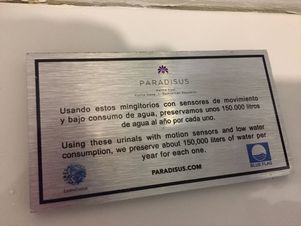


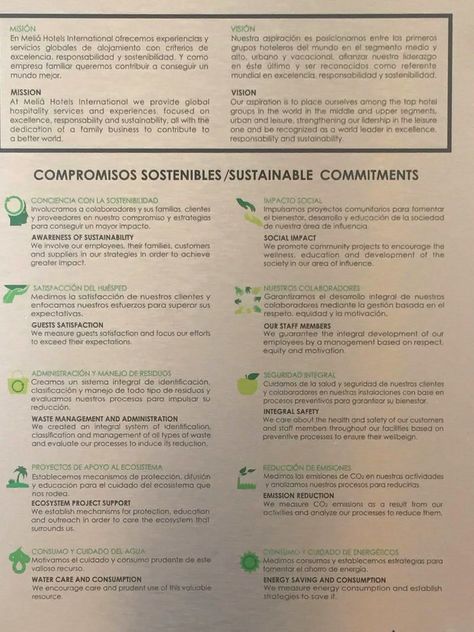

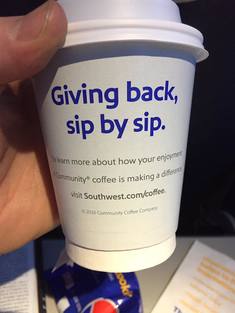


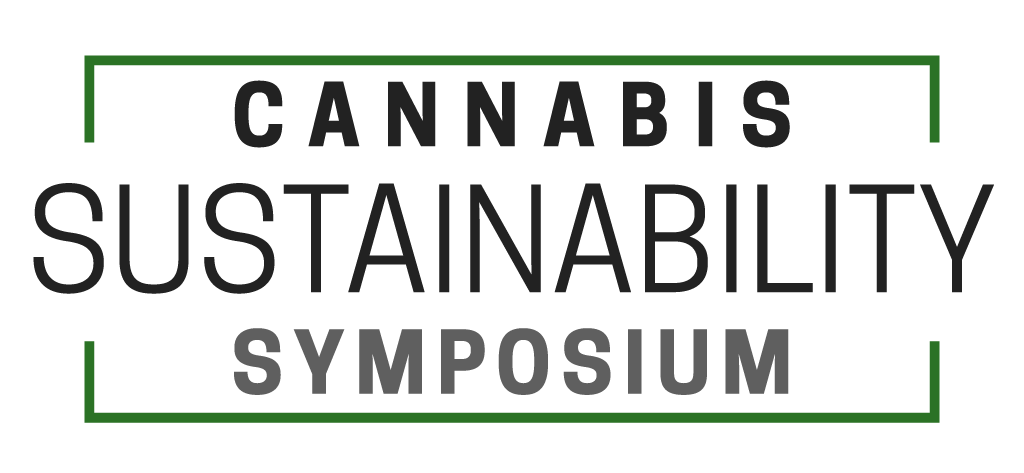


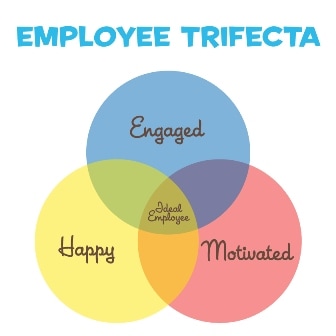
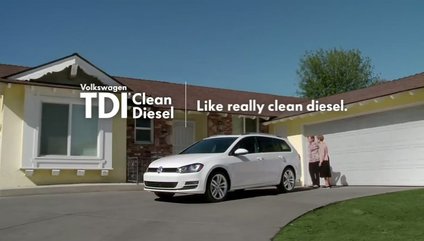
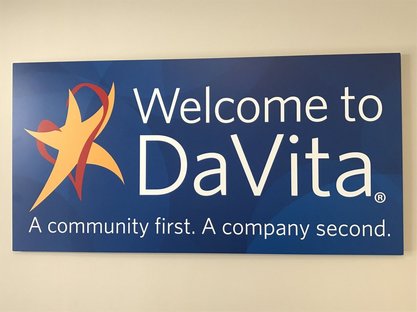
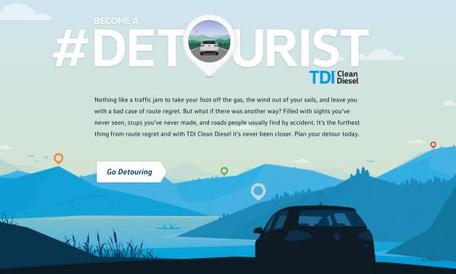

 RSS Feed
RSS Feed